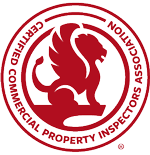Dry cleaners may appear to be simple storefronts, but they present serious safety challenges related to fire risks and health and environmental hazards. Property owners, managers, and prospective buyers should be aware of these potential issues and work with a commercial property inspector to help assess and document conditions. In real estate listings, these properties are often categorized as a business for sale, typically under retail dry cleaning (i.e., coin laundry/dry clean combo), laundry services, or special purpose spaces. Some dry cleaning operations may also be located within other building types, such as hotels and resorts.
Dry Cleaner Property Inspections
Inspections performed in accordance with the International Standards of Practice for Inspecting Commercial Properties (ComSOP) address many of the fire and life safety hazards associated with dry cleaning and laundry operations. However, there are also additional property- and use-specific considerations that inspectors can anticipate.
These businesses use powerful chemical solvents, often flammable or toxic, and equipment that generates heat, exhaust, static, and friction, typically within tight spaces shared with or adjacent to other tenants. As a result, dry cleaning operations can impact neighboring units, ventilation systems, and the overall safety of the building, both during active use and long after operations end.
Because of these potential risks, the ComSOP includes inspection points such as exterior exhaust terminations, the presence of fire extinguishers and suppression systems, means of egress components and safety, and the storage of flammable or combustible materials, among others.
This article introduces the common risks and inspection considerations associated with dry cleaner properties and their operations. To schedule an inspection, use the Find an Inspector Directory to connect with a certified commercial property inspector near you.
Fire Hazards
Dry cleaning shops and operations are particularly susceptible to fire due to the presence of flammable solvents, static or frictional sparks, heat-producing equipment, and lint accumulation. Sparks or friction near storage or processing areas can ignite a fast-spreading fire. Proper compartmentalization, fire-resistant construction, suppression systems, and facility maintenance are critical and an important consideration for commercial property inspectors.
Key considerations include:
- Posting and enforcing “No Smoking” rules.
- Providing at least two unobstructed means of egress.
- Ensuring dry cleaning rooms are separated from the rest of the building by partitions with a 2-hour fire-resistance rating.
- Installing BC-rated fire extinguishers and sprinkler systems in rooms that use petroleum-based solvents.
- Maintaining an emergency drainage system for solvent spills.
- Performing regular cleaning to prevent the buildup of lint and waste.
Dry cleaners are classified under fire codes and AHJs based on the type of solvent used. The solvent’s flash point determines its flammability and influences the facility’s fire protection requirements.
Health and Environmental Hazards
PERC (tetrachloroethylene) rose to dominance in the 1960s, largely replacing more flammable petroleum-based solvents. It’s known for its effectiveness, but also for its toxicity. Exposure can affect the central nervous system, organs, and respiratory system. It’s also a probable human carcinogen and an environmental contaminant. Even shops that have switched to alternatives like DF-2000 or EcoSolv® may still pose risks, especially from improper storage, vapor release, or past contamination.
Exposure can occur:
- During machine loading/unloading.
- When solvent vapors escape into the air or neighboring units and areas.
- Through skin or eye contact with contaminated clothing or surfaces.
Inspectors should watch for:
- Strong chemical odors.
- Employee health complaints (headaches, dizziness, nausea).
- Improper storage or manual solvent handling.
- Inadequate ventilation or closed-system failures.
Inspectors and those associated with dry cleaning operations should understand that a facility’s solvent and chemical use impacts not only impacts fire risks but also health and environmental conditions. Some solvents and chemicals historically used in dry cleaning can pose long-term risks of groundwater and soil contamination.
Because of these concerns, commercial property inspectors may recommend that clients consider a Phase I Environmental Site Assessment (ESA) for any property associated with current, former, or nearby dry cleaning operations.
Other Inspection Considerations
Dry cleaners also typically use:
- Heated pressing and finishing equipment
- Automated conveyors
- Tailoring stations
- Bagging devices
- Scale, carts, and wire hangars
Although dry cleaners are typically listed under retail or service-use categories in commercial real estate, dry cleaning facilities often involve industrial-level equipment and mechanical systems. These all present further potential safety hazards related to burns, puncture injuries, slip-and-fall injuries, and overheating, and should be carefully accounted for in a commercial property inspection and active operations.
Inspectors are not required to inspect or test tenant-owned equipment, but they should be mindful of clear working space around mechanical and electrical systems, as well as any trip hazards or obstructions to the means of egress.
Summary
Dry cleaner property inspections should be performed by a certified inspector familiar with the fire, health, and environmental risks involved. Whether listed as retail dry cleaning, laundry service, or special purpose, these properties often require a thorough inspection and risk assessment. While EPA and local AHJ regulations address chemical use and storage, commercial inspectors provide a visual evaluation of current conditions and potential hazards.
Refer to the following articles for a more in-depth overview “Inspecting Dry Cleaner Properties: Fire and Life Safety Risks” and “Inspecting Dry Cleaner Properties: Health and Environmental Risks”. They cover dry cleaner classifications, solvent and chemical use and storage, fire and safety requirements, ventilation concerns, and when to consider an environmental assessment to identify potential contamination. You can also refer to the inspection checklist as a field guide.
If you own, manage, or are planning to buy a dry cleaning shop, CCPIA® Certified Commercial Property Inspectors serve as an independent third-party trained in building safety and mechanical, electrical, and plumbing (MEP) systems. They can also refer clients to qualified environmental professionals for further assessment when needed.
Additional Resource for Commercial Property Inspectors:

